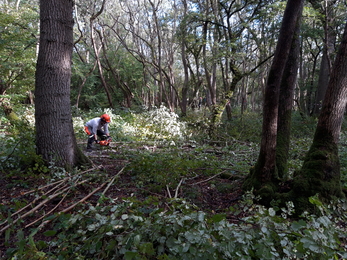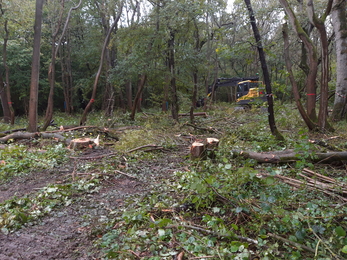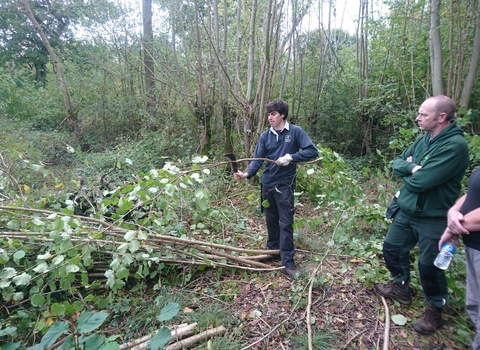Hayley Wood is the largest oxlip wood on chalky boulder clay in Britain and one of only a very few woods in Cambridgeshire surviving from prehistoric times; a valuable remnant of ancient woodland, it's a haven for biodiversity in a landscape of intensive farming. The Trust's management work creates a varied structure, with trees of different stages of maturity, some areas coppiced on rotation (read more below), wide grassy rides and minor paths. This creates a variety of microhabitats that suit different species and so conserves the biodiversity of the wood and sustains a harvest of mature trees for timber and coppice poles with many uses.
The humble oxlip, Primula elatior, is a delicate spring flower found in damp woods and meadows favouring nutrient-poor and calcium-rich soil, and often associated with ancient woodland, characterised by flowers facing the same direction to one side, found only in small areas of Cambridgeshire, Suffolk and Essex. Whereas the far more common cowslip, Primula veris, is found across much of the UK, with deeper yellow flowers on both sides, as is the false oxlip Primula veris x vulgaris, a hybrid of cowslip and primrose which grows to the same height as oxlip but the flowers do not grow one-sided.
Funding for much needed woodland management work at Hayley Wood of £20,600 came from the Amey Community Fund, which awards grants to support community, environmental and heritage projects run by non-profit organisations based in Cambridgeshire, within 10 miles of a landfill site. The fund is managed by Cambridgeshire Community Foundation and is part of a voluntary environmental tax credit scheme called the Landfill Communities Fund.
The grant has enabled extending coppicing into two new areas bordering cross rides in the wood, plus additional work in other areas improving the woodland structure. Work carried out by staff included clearing two acres along the cross rides to create new coppice plots; selective felling of mature standard trees; felling an area of mature ash succumbing to ash die back in the southern corner, allowing other species to regenerate; mowing grassland ride and glade areas on the cross rides and maintaining paths, gates and footbridges for safe public access.
This project is opening up new areas of the woodland floor where the oxlip and other ground flora can flourish, and provide prime habitat for many invertebrates and birds.



